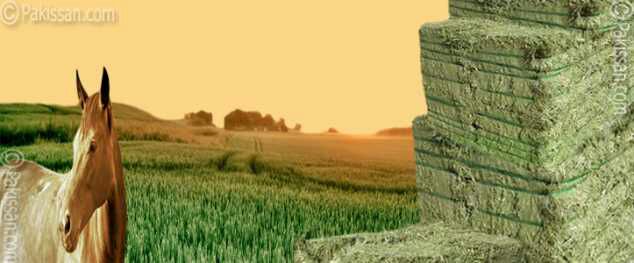Rain may affect your harvesting plan. Check weather report regularly in Monsoon Season and harvesting at 1.75'-2' heightis better than cut over 3' crop. In high temperature, use moisture meter to check moisture. Over dry or more sun exposure can cause bleaching of crop. Never Spray urea after harvesting, it may increase decomposition level and change the color but not affect the Crude Protein % in crop. 6-10 kg urea broadcast with last irrigation before cut in high temperature can give more greenish color and high crude protein level in green plant.Land Preparation and Sowing1. Level the land through Laser leveler and put gypsum in case of salinity or alkalinity in soil as mentioned in Soil Test reports2. Put the decomposed FYM before 2-4 weeks of sowing3. Fresh FYM application before sowing is not a good practice and may be harmful if sowing continue above 45 C4. Sowing season starts from February when night temperature is not less than 15 C5. Sowing continue till October. In Lower Sindh Rhodes grass sowing is also recommend in Oct-Nov6. Sowing in Sandy soils is not recommended in June & July. It may affect your germination and root development, also effect irrigation cost.7. 8 Kg seed is recommended for good hay yield with 1 bag of DAP & Urea8. Seed broadcast is recommended in evening in June & July months.9. 25 Kg Urea is recommended with 3rd irrigation after sowing/ Apply urea in splits with each irrigation10. 70% germination is complete in 8-10 days after sowing but germination completes till 14th day.11. Broad leaves weeds can be eradicate through weedicidesin 1st and 2nd cut. Later on grass cover the patches12. Small Patches (up to 2') in field will be cover till 3-4 cut.1st Cutting to on word1. 1st cutting will be ready in 50-60 Days.2. 2'-2.5' crop height will consider best for harvesting however 10% flowering is also sign of harvesting3. Recommended cutting height is 4'' above soil surface4. Harvesting less than 4" can cause slow growth in next cuttings and may cause roots burning in high temperature5. 2nd to onward cuts will be ready in 28-30 days6. 2- 4 irrigations will require in one cut according to weather or soil surface7. Split doze of 25 Kg urea with alternate irrigation shows good result.8. After every 3rd cut, 50 Kg NPK (20:20:20) with 5 Kg Zinc Sulphate will be better instead of Urea. Organic Fertilizer can be used to cover the deficiency of Micro elements9. Zinc Sulphate must apply after cutting. Never apply Zinc when crop height increase to 8"10. In high temperature or due to drought stress, flowering starts earlier. Irrigate the field on immediate basis and put 25Kg Urea11. Rhodes grass crop can bear standing water up to one week12. Hay yield in first two cuts will be less than 2 ton. But on average 2 ton Rhodes grass hay can be achieved easily13. In 3rd cut, hay yield can be achieved to 2 ton/ acre. Hay isthe 20% of green fodder14. Green olive color hay with less than 15% moisture is considering Quality A. It has above 11% crude protein15. Take 5-6 days for Mowing, racking and baling. More time in this process can affect your total cuts.16. Irrigate the field immediately as your field will be clean17. Rain may affect your harvesting plan. Check weather report regularly in Monsoon Season and harvesting at 1.75'-2'height is better than cut over 3' crop18. In high temperature, use moisture meter to check moisture. Over dry or more sun exposure can cause bleaching of crop19. Never Spray urea after harvesting, it may increase decomposition level and change the color but not affect the Crude Protein % in crop20. 6-10 kg urea broadcast with last irrigation before cut in high temperature can give more greenish color and high crude protein level in green plant21. Clean the field manually after baling or with V shaped Mower before irrigation. Hay residues in field may effect on regrowth & fungal infestation22. Harvest the last cut in November- December and leave the field without irrigation but apply small dose of decomposed FYM in field23. Manage your last cut with weather severity, again limited plant growth may effect crop field in severe frost or fog season24. Patches appearance in field will be due to mower balance, cutting below 4", salinity issue or due to land levellingAll these recommendations are for heavy to sandy loam soils under flood irrigation system in for Central Punjab to lower Sindh.March 2016ByM Salman Naeem & M ShahbazSource:Pakissan Team

No comments:
Post a Comment